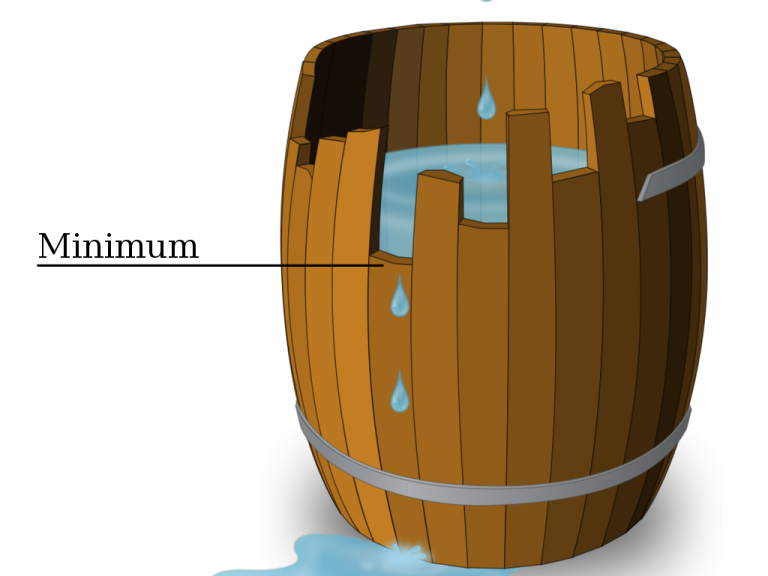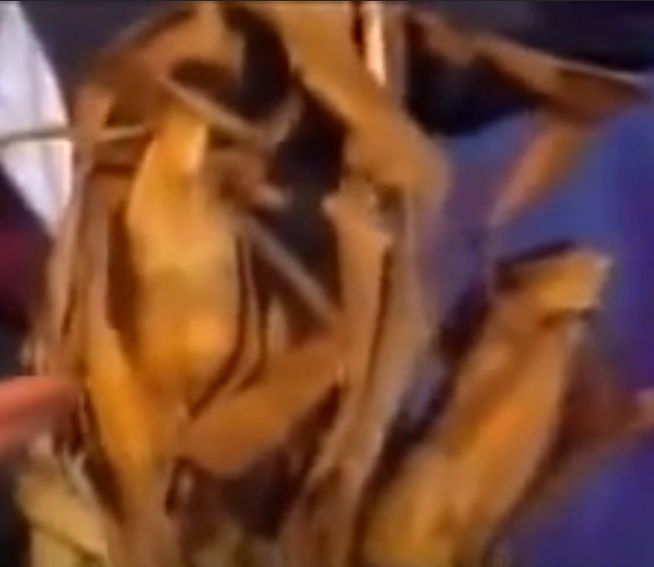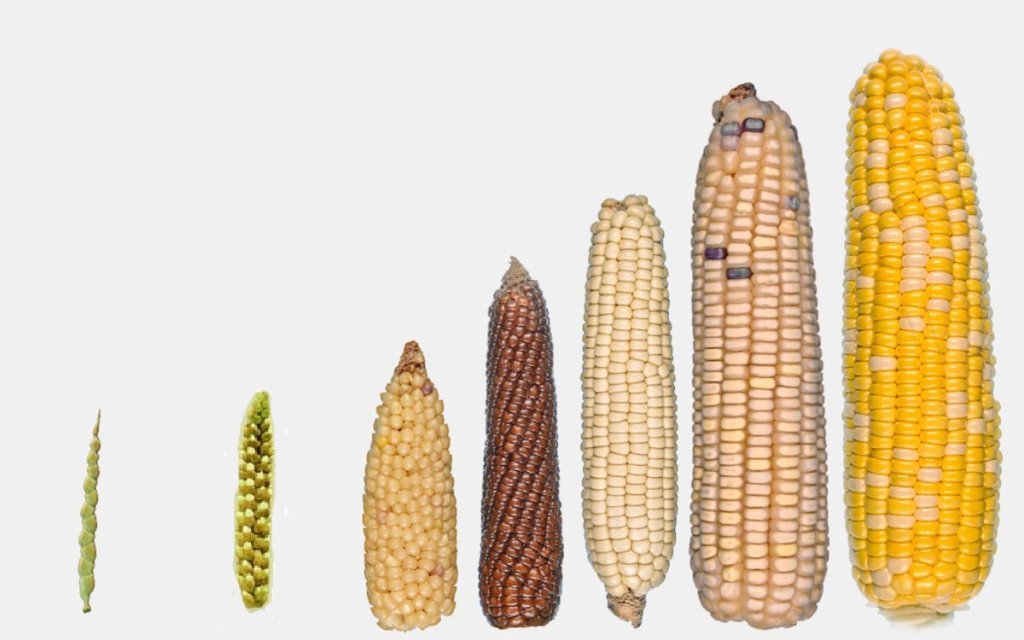Alternative theories of plant science

Justus von Liebig was a German scientist working on the fields of agriculture and chemistry. He has been described as the "father of the fertiliser industry". In 1840, he published his mineral theory of plant nutrition and the law of the minimum. These theories show that plant nutrition is based on essential inorganic minerals and that the lack of one essential mineral becomes the limiting factor for plant growth. He identified the importance of the macro elements nitrogen (N), phosphorus (P) and potassium (K) for plant growth. If one element was not available in sufficient quantities, it became the limiting factor, and the availability of the other elements could not overcome this limitation. This is illustrated with Liebig's barrel, a half-broken barrel in which the lowest barrel opening would dictate the overall water level, regardless of how much water was added.
Liebig's achievements did not stop with the discovery of NPK for plant nutrition, but also included reflections on the importance of various nitrogen forms. He also reported that plants acquire carbon and hydrogen from the atmosphere and water. His work revolutionised our understanding of plant nutrition, agricultural sciences, and organic chemistry. After all, the knowledge about inorganic minerals in plant nutrition led to the development of mineral fertilisers, to date, the single invention which saved the most lives.
 By Yara International via Twitter.
By Yara International via Twitter.
However, just because the most basic principles of plant nutrition have been explained a few hundred years ago, does not mean that there is no room for different interpretations. As a specialist working in this field, I would like to highlight that the following theories do not reflect my personal opinions. However, I admit some affection towards such alternative theories. Not because I entertain the thought of their plausibility, rather their creativity.
Biodynamic agriculture
Biodynamic agriculture is an alternative form of organic agriculture, often described as enhanced organic agriculture. It uses the principles of organic agriculture but also tries working with the cosmic forces that inherently interact with the environment. These principles were described by the Austrian Rudolf Steiner in 1924. Wikipedia describes him as an “occultist, philosopher, social reformer, architect, esotericist, and claimed clairvoyant.” Among other things, he also invented the Waldorf schooling concept. He followed the general viewpoint that everything is inter-connected, which is why he interpreted food production systems as an organism, rather than distinguishing between plants, soil, microbial life, etc. He sought to improve soil health and plant growth using various preparations and formulations. These comprise cow horns filled with dung or oak bark which is cut in pieces and placed inside the skull of a domesticated animal. Often, such mixtures would be sprayed onto plants or buried into the soil at special times of the year.
From a scientific viewpoint, there is no difference between biodynamic and organic agriculture, at least when looking at the commonly used measurements. But both methods are clearly distinguished from conventional agriculture in terms of yields and secondary plant metabolites 1 2 3. Another long term study even found opposite yield effects. This means that the organic enhancement, which is the application of various formulations and the summoning of the cosmic force, does not have measurable effects on the plant growth, or even negative effects. This aligns with the general concept of creating these biodynamic practices, which did not follow scientific principles but resulted from spiritual exercises and esoteric insights of Rudolf Steiner. It also reminds me of a previous blog article about the science of intention, in which the intention of a group of people can affect the real world on a chemical level, thereby changing scientific outcomes. Of course, this theory is just as much pseudo-science as the biodynamic agriculture, although the scientific evidence seems to be a bit denser for the power of intention. At least, we have some research on ultrasonic acoustic emissions and their effect on plants or some scientific discussions about alternative signalling modalities. In a similar way, going through the efforts of preparing biodynamic formulations and applying them on certain days of the year could have intentional effects on plant growth. But why is this not picked up by scientific studies? Is the scientific background just a hoax? Or did the scientist conducting these studies not believe hard enough? You can decide for yourself. Maybe some literature on the similarities between Carl Jung and Rudolf Steiner (and Goethe) can help your decision making. After all, strong intentions could manifest as autonomous beings and form subconscious archetypes.
Homeopathy
The homeopathic idea follows two principles. First, “like cure likes”, meaning that undesirable conditions can be counteracted by applying substances that could induce the same conditions in healthy organisms. Second, the lower the dose, the stronger its effect. Homeopathic mixtures become increasingly effective when diluted. Higher dilutions have higher potencies and can reach levels where not a single atom of the original substance is present anymore. This is a commonly cited fact which is used to proof the inefficacy of homeopathy. Of course, it is not that easy. According to homeopathy, effects are not simply due to substances and their biochemical interactions (i.e., Paracelsus’ dose-response-interaction), but other mechanisms, such as water memory. Water, which is used for the dilutions, remembers the state of the substance from the original dilution and carries it on to the following dilutions.
There are various commercial homeopathic products intended for plant use. Often, these products contain the smallest amounts of plant fertiliser, or include other common homeopathic preparations. Other forms of agro homeopathy use special devices to imprint desired frequencies to water. For human health, there is no proof of homeopathic effectiveness. This is also reported in “A systematic review of systematic reviews of homeopathy”. Although plants are used as a model organism for homeopathic basic research, there is not much credible work on its effectiveness or ineffectiveness. If homeopathy has some tangible elements, then it should be simple enough to prove it with some plant studies. After all, plants are easy to grow and to replicate with relatively minor variation. As far as I know, they are also not conscious enough to show placebo effects.
Electro culture
This theory is only peripherally connected to plant nutrition. It was first described in the mid-1800s and has seen a massive revival in the 1980s due to the “Urzeit-Code” (“Primitive-time code”). Electro culture describes the effect of the electric field on seed germination and plant growth. The finish physicist Selim Lemström discovered around 1900 that plants are growing exceptionally well after seasons with high polar light activity. Indeed, effects between electric field and plant physiology seem to be possible. According to Goldsworthy, plants react to lightning by increasing their capacity to take up water. Plant cells could also be damaged due to the ionic effects in the electric field, which is then compensated by increased growth. After all, plant cells are full of ions, such as potassium, sodium or calcium. Similar effects of overcompensating plant growth reactions have also been described after certain levels of herbivory damage or infections with diseases.
However, the plausibility is exponentially shrinking when looking at the phenomenal success of the “Urzeit-Code”. This "conspiracy" describes electro culture research which was undertaken by the Swiss agrochemical company Ciba-Geigy in the 1980s. This research was promoted via video footage and talk show appearances of the lead scientists. The video shows scientists explaining their incredible discovery. Maize seeds were placed in a petri dish and germinated under an electric field. The resulting plants carried 12 large maize cobs, and the scientist suggests that this plant does not require any chemicals, grows faster, and has improved germination rates of the subsequent seeds. Similar things apply to rainbow trouts after their eggs were placed under an electric field. The resulting fish grew bigger, faster and were more resistant to diseases. Because of these reasons, this video and the underlying concept are occasionally referred to by GMO critics. Of course, the agrochemical industry wants to sell their products, which is why this concept was patented and then never used again. But how did the application of an electric field (supposedly) increase plant growth? Easy! The electric field switched on the genes which are deeply buried in the genome since the primitive times. However, due to breeding and domestication, these genes have been de-activated. Therefore, deductive reasoning leads to the result that plants and fish must have had better traits in the past but were selectively bred to be smaller and weaker. Of course, this is utter bull**** . Plants do not have evolutionary advantages when carrying 12 maize cobs with enormous kernel sizes. Instead, wild types of our staple crops show the opposite. The most likely explanation for all of this is a PR-stunt by Ciba-Geigy using some fake maize plants. You really have to ask yourself why this knowledge could have been hidden from the public for so many years…. if it was true? The equipment to reproduce this experiment would cost less than $20.
 Screenshot of "Urzeit - Code". Scientst showing what seems to be a maize plant with dozens of large corn cobs. Source: https://www.youtube.com/watch?v=M4N4xFksnOc&t=259s
Screenshot of "Urzeit - Code". Scientst showing what seems to be a maize plant with dozens of large corn cobs. Source: https://www.youtube.com/watch?v=M4N4xFksnOc&t=259s
 Maize breeding progress. Comparing ancestral varieties with recent elite genotypes. Source: https://mycrispr.blog/2021/07/26/advancing-agriculture-according-to-c-s-prakash/
Maize breeding progress. Comparing ancestral varieties with recent elite genotypes. Source: https://mycrispr.blog/2021/07/26/advancing-agriculture-according-to-c-s-prakash/
Phyto-endocytosis
I remember reading about this during my first few bachelor semesters. Not about the actual endocystosis as it is found in bacteria, but its apparent importance for plant nutrition. Needless to say, the book I have in mind is beyond factual science, but it still found its way to the university library. Endocytosis is a process in which substances are transported into the inside of cells. After including the substance, it is surrounded by a vesicle and often digested. One example is the endocytosis of human white blood cells, which can bind to, and absorb, pathogens. According to Justus von Liebig’s theory, plants don’t need to do this because they take up minerals. They have different acquisition strategies to do this. Some mineral ions can passively diffuse into the roots, while others are actively transported. Plants also have symbiotic relationships which help in the nutrient uptake, such as nitrogen fixation with rhizobacteria or phosphorus uptake with mycorrhizal fungi.
Phyto-endocytosis describes how roots can – apparently – take up living organisms into their cells and use them as nutrient source for their physiological processes. Even more so, fine roots can invert themselves and take up bacteria and nutrients this way. To some degree, I can understand how anyone would develop such theories. In natural environment, plants could not survive without the presence of soil microorganisms. They are heavily involved in the nutrient dynamic of soils, protect plants from pathogens and can even change secondary plant metabolites. It is no surprise that the zone surrounding the roots is filled with microbial life and that plants invest a huge percentage of their photosynthesis products for this. But saying that plant nutrition is mainly the result of digesting bacteria would be an exaggeration. Although, plants are host to a range of endophytes. These endophytes can change plant hormones and thereby change plant physiology. There is emerging research that plant endophytes are omnipresent and of high ecological importance. This blog post would age really badly if the next wave of research would discover the importance of endophytes for plant nutrition. Until then, I will hold tight to Liebig’s mineral theory.